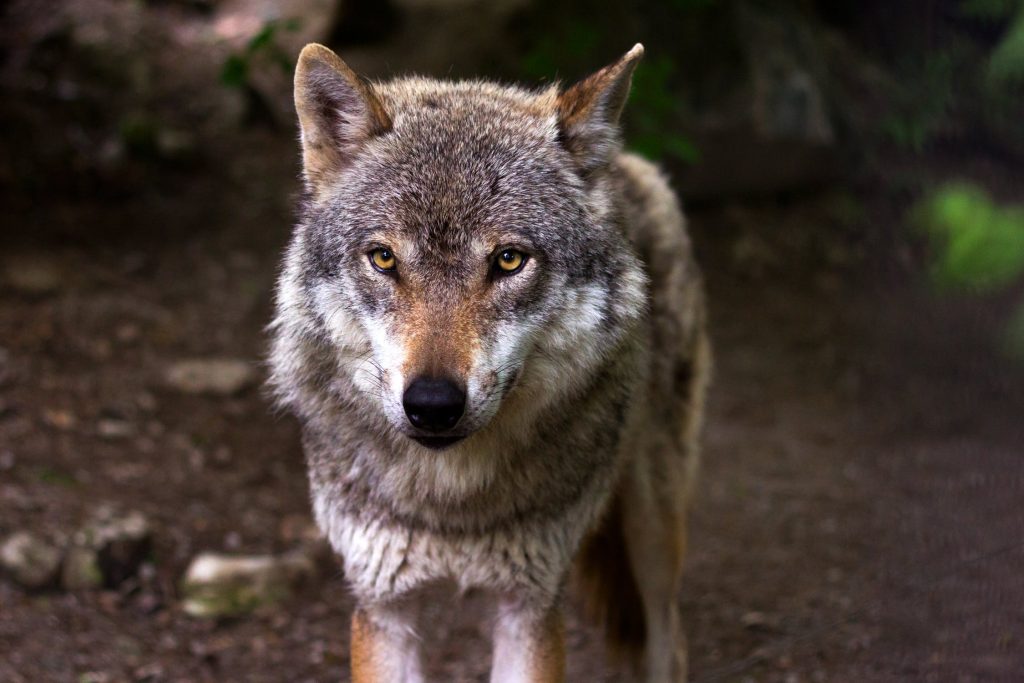There are five large sheep-raising operations in the Big Wood Valley, in central Idaho. Seventeen years ago, they banded together to conduct a long-range experiment focused on whether it was possible to use non-lethal tools and tactics to discourage wolves from preying on their sheep.
Partners in the program included Defenders of Wildlife, Wildlife Services of the U.S. Department of Agriculture and various academics from universities around the world. The protected area was open-range.
At the seven-year mark, a joint report indicated that within the Wood River Wolf Project protected area, losses were 3.5 percent lower than in non-protected areas. Last year, of 25,000 head of sheep and lambs in the protected area, wolf predation was limited to four animals, said Suzzane Ashe Stone, a founder of the study, formerly with Defenders of Wildlife and now director, International Wildlife Co-existance Network.
In contrast, Colorado ranchers have lost 10 calves or cows after 10 wolves were imported from Oregon and released in Grand and Summit counties in December. Counties where livestock have been lost to wolves are Grand, Jackson and most recently, one in Routt. According to U.S. Department of Agrgriculture figures for 2022, (the most recent available online) the number of cattle and calves for those three counties combined totals just over 70,000.
At last report, most of the wolf-impacted ranchers in Colorado have declared that they’ve given up on non-lethal deterrents (tactics, tools and a range-rider for night patrols) and want four wolves killed for what they term is chronic depredations.
The Colorado Department of Parks and Wildlife (CPW) recently expanded ranchers’ lethal options, voting at its June 13 meeting to allow the use of scopes and binoculars with artificial light to shoot at wolves during night attacks. Just yesterday it announced an additional $28,000 in funding to support the non-lethal deterrence efforts of the Middle Park Stockgrowers Association.
“The Colorado ranchers have not yet fully used the best non-lethal practices,” said Stone, who continues to follow developments with the Wood River Wolf Project. “It took us a few years to get it right.”
In those earliest days of non-lethal deterrence, one incident involved a sheepherder grabbing a steel dinner plate and metal spoon, and making as much of a racket as possible, while screaming and shouting until he got hoarse. Fortunately, the wolves left.
“Not one of the CPW or ranchers have accepted our invitation to show them how we do it (in Wood River area),” said Stone.
So, an on-going predator deterrence program that is reporting encouraging results, is seemingly ignored by wildlife officials and threatened ranchers alike.
“Learning from experienced studies can dramatically shorten the learning curve,” said Stone, “but they have spent little time doing that.”
And it isn’t as if the Wood River Wolf Project is a big mystery. Academic papers refer to it, as do any conservation groups interested in wolves or carnivores. Indeed, Stone was a panelist for a wolf forum sponsored by the Colorado Sun last year. Eric Odell, CPW’s wolf program manager was also on the panel. Stone spoke extensively about Wood River lesssons learned.. The CPW official had no questions how those sheep growers had such strong results – like less than five sheep losses in a year for a collective herd of 25,000.
And Wood River continues to try new things. Recently, the program used a grant to purchase LED lights on protective collars for livestock guardian dogs, as well as LED lights tagged onto sheep ears. In the dark, the lights give clues to humans how livestock guardian dogs and livestock are reacting to the movements of wolves.
What are wolves eating, other than livestock?

It has been about six months since 10 Oregon wolves were released in Colorado. In that time, 10 Colorado livestock have been killed, eaten or partially eaten by wolves.
That isn’t enough meat to keep those wolves alive. There is the possibility that some cows and calves have been totally consumed by wolves, and their deaths cannot be attributed to wolves. But no one knows. Livestock can and do disappear, every year, before or after wolves.
Eric VanNatta, a CPW wildlife biologist in the Jackson County town of Walden, said it is “tough to confirm” what wolves have been preying on – other than livestock. He said there are plenty of possible prey bases out there—elk, deer, newborn ungulates, squirrels, beaver, trout and birds.
“Wolves are very opportunistic about food,” said VanNatta. They’ll certainly eat wildlife carrion as it emerges from melting snow.
Winter before last, he said, Colorado had a very rough winter, that would have generated lots of carrion for scavangers. This past winter wasn’t as rough, so there would be less carrion opportunities, he added.
He and his fellow wildlife biologists mostly track big game populations, because that is what hunters are interested in. Rabbit population increases or declines are not tracked by biologists, though they would be of interest to wolves, coyotes and birds of prey.
“We are at an early stage of tracking these other prey populations, so we should have a better picture in about five years,” said VanNatta.



